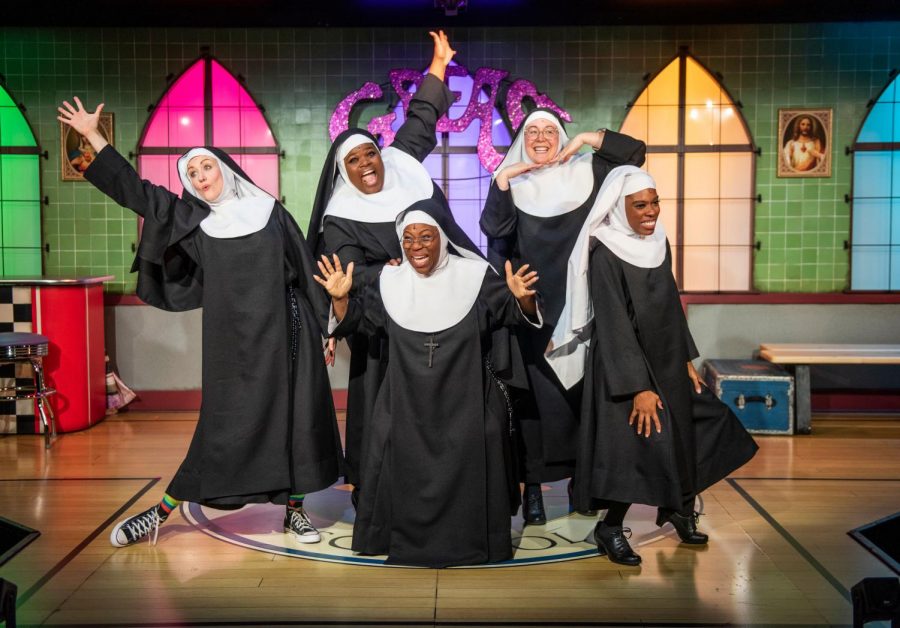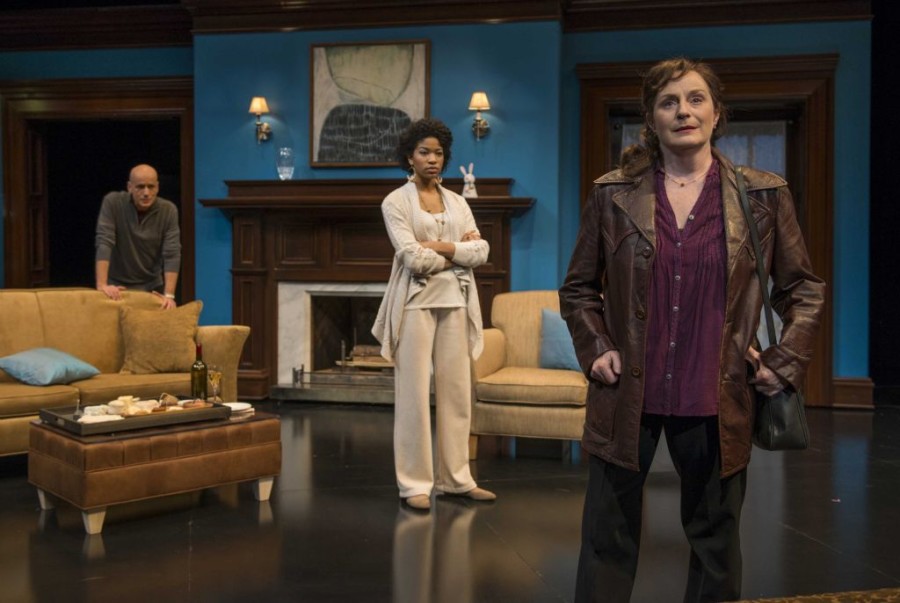
So often, we view the mistakes of the past from the outside. We look back on societal problems with clarity and create a narrative of progress to keep us distant and distinct from the flawed characters of history.
The Repertory Theatre’s new production, “Clybourne Park,” questions that detachment. The play depicts race through a prism of both past and present. Its sharp dialogue, made of equal parts humor and hostility, shows tenuous discussions from two eras, the ‘50s and today. The result is an image of two distinct racial climates that may have more in common than we might like to think.
“Clybourne Park,” which will play at the Rep until Feb. 24, was first staged in 2010 and quickly found widespread popularity and acclaim. The play went on to win the 2011 Pulitzer prize for Best Drama and the 2012 Tony Award for Best Play.
Now, the show has been a popular choice among regional theater companies across the country. The popularity of the plot is likely in part because its story of gentrification and segregation resonates in cities across the country.
“Clybourne Park” was written by Bruce Norris as a response to Lorraine Hansberry’s classic play “A Raisin in the Sun.” In Hansberry’s work, the Youngers, a black family living in poverty on the South Side of Chicago, come into an unexpected fortune. The mother of the family, Lena, decides to use the money to buy a home in an all-white neighborhood. Karl Linder, a member of the neighborhood, visits the family and attempts to bribe them out of moving.
The first act of “Clybourne Park” depicts events from the perspective of the white family who sold the house to the Youngers. In using the famous play as source material without attempting to change or mimic it, “Clybourne Park” enters into a dialogue with “Raisin in the Sun.” It provides a reason why the Youngers got the home at such a good price and explores the complex emotions and social conditions instigated by the change in the neighborhood.
Act I is set in the home purchased by the Youngers in Chicago in 1959. Much like “Mad Men,” the first act presents behavior, offensive by today’s standards, with a wink of the modern perspective. Characters revert to the racial norms of their day, making modern audiences squirm under the uncomfortable presence of unfiltered discrimination.
One particularly hard scene to watch develops when Linder enters the home of the packing family. Linder lives in the neighborhood and fights the move – he is also the only character who also appears in “Raisin in the Sun.”
He creates a truly horrible argument for segregation and questions the black servant of the house, Francine, and her husband, Albert, asking if they would want to live in a neighborhood where the grocery store doesn’t sell the types of food “they” would want to eat. Where works like “Mad Men” may allow the audience to chalk this type of ignorance or cruelty of the characters to the flaws of the past, “Clybourne Park’s” second act forces the issues into today’s reality.
Halfway through the intermission, the music of Buddy Holly and Elvis abruptly switches to Kings of Leon, and the set, which was originally a charming ’50s home, becomes covered in graffiti, debris and abandoned furniture. One telling spray-paint message reads “Gentrify this!!!”
We find ourselves 50 years in the future in the same home. The narrative of those years is implied; we all know the story. With the influx of black residents came a “white flight,” a decrease in property values and overall economic decline. The conflict again arises from new neighbors threatening the make-up of the area. This time, though, it is a white couple hoping to renovate the dilapidated space, robbing it of its historic edifice. Two members of the neighborhood, along with a real estate agent and a lawyer, argue over the renovation in a discussion that both mirrors and diverges from the beginning of the play.
The second act references themes, lines of dialogue and characters from the first half to show the way issues surrounding race have morphed over the years. The modern-day act is full of euphenism and side-stepping of racial issues that speaks to the change of attitudes.
But within the pretense of political correctness, the characters – both directly and indirectly – show many of the same prejudices and conflicts continue from the days of “white flight.” It’s often when characters are most trying to prove their “racial sensitivity” that they reveal how ignorant they truly are, digging themselves deeply into a hole of offense and insensitivity. It is simultaneously uncomfortable and hilarious to watch their dialogue unfold.
The two acts are additionally linked as the actors from the first act take on the new roles of the modern day characters in the second. The Rep’s cast does a marvelous job of finding that tenuous balance between the play’s serious emotion and satire. Every member of the show gave powerful performances with impressive range in taking on two characters from two eras. The dialogue is so well-written that it is a joy to hear, however harsh the sentiments may be, and the engaging delivery makes it sing.
“Clybourne Park” raises more questions than it answers. It travels in territory often uncomfortable and uncommon, but it reminds us that today’s problems are tomorrow’s history, and though the context may change, some conflict lingers.




